Acalypha neomexicana, New Mexico Copperleaf
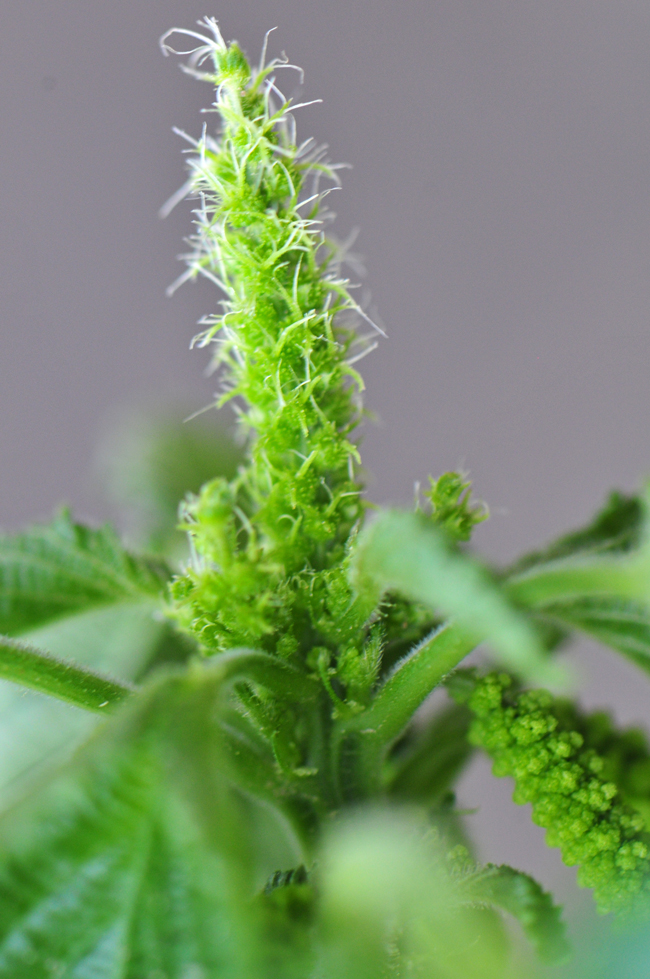
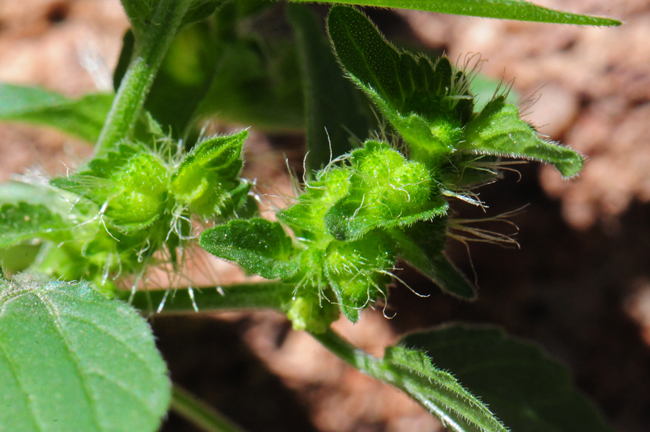
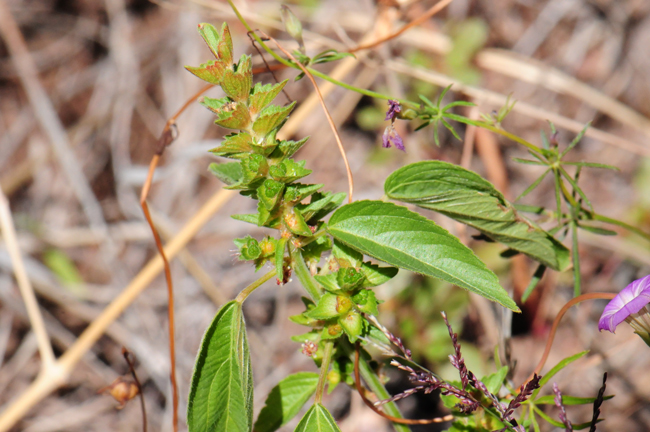
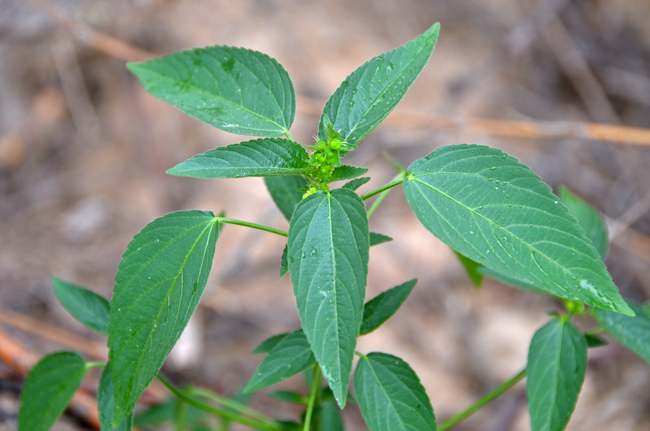
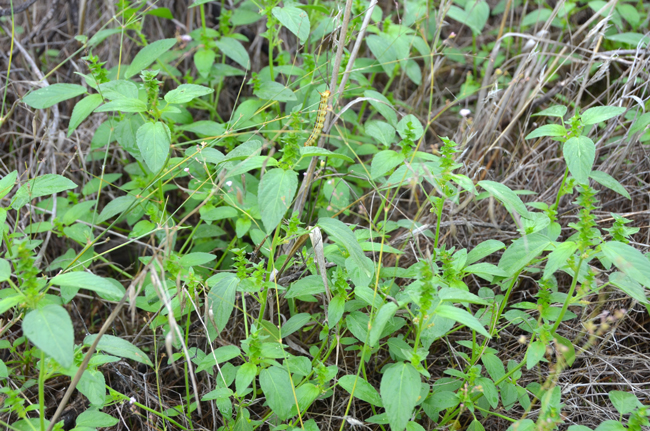
Scientific Name: Acalypha neomexicana
Common Name: New Mexico Copperleaf
Also Called: Hierba de Cancer, Three-seeded Mercury
Family: Euphorbiaceae, Spurge or Euphorbia Family
Synonyms: ()
Status: Native
Duration: Annual
Size: Up to 15 inches more or less 93.8 dm).
Growth Form: Forb/herb; stems erect, small plants without many branches but larger plants have many ascending branches; the plants are often tinged with a golden-red; short hairs; unlike many other Euphorbiaceae, plants do not exude milky sap.
Leaves: Greenish-golden, some golden-reddish; leaves ovate, alternate, leaves with petioled, leaf tips acute, bases rounded, margins serrate except at base, leaf surfaces strigose.
Flower Color: Greenish, inconspicuous, both male and female flowers, from terminal or axillary spikes, all flowers subtended by bracts; fruit a 3-lobed hairy capsule
Flowering Season: August to October or November.
Elevation: 2,500 to 7,500 feet (762-2286 m).
Habitat Preferences: Moist or shaded areas, rocky soils; oak or pine woodlands, desert grasslands.
Recorded Range: New Mexico Copperleaf is found in the southwest United States in AZ, NM and TX. In Texas it is found in the trans-Pecos region. This species also is found in northern and central Mexico.
North America & US County Distribution Map for Acalypha neomexicana.
U.S. Weed Information: No information available.
Invasive/Noxious Weed Information: No information available.
Wetland Indicator: No information available.
Threatened/Endangered Information: No information available.
In the Southwestern United States: Arizona has 5 species of genus, California has 1 species, Nevada has 0 species, New Mexico has 3 species, Texas has 11 species, Utah has 0 species. All data is approximate and subject to taxonomic changes. Most species are east of Texas. Several introduced species.
Comments: It is interesting that the genus is mostly tropical and subtropical in distribution and most of the species in North American occur east of the Mississippi River. It is notable that species found in Arizona and New Mexico do not extend to the east and are limited in distribution to the southwest, although they are more of an upper desert or transition species in upper riparian areas. Many of the species found in Texas extend their distribution to the east.

